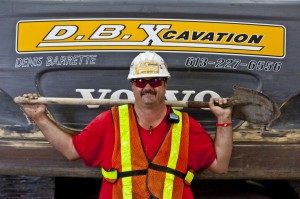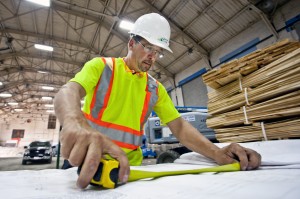CDS
/0 Comments/in News /by Doug DaceyCTV News Article
/0 Comments/in News /by Doug DaceyAs part of the City of Ottawa’s Confederation Boulevard – Sussex Drive Reconstruction Project, CDS Building Movers was sub-contracted to move two heritage buildings to accommodate the widening of Sussex Drive. The first phase was to relocate a two-storey brick house at the corner of Sussex Drive and Bolton Street back (east) approximately 35 feet. A few weeks later CDS moved a 300 ton brick triplex at 275 – 279 Sussex Drive approximately 40 feet east in order to accommodate the road widening.
CTV News was on site to capture the triplex move and broadcast the story on the 6:00 p.m. evening news on Monday, May 5, 2014.
Check out this Video of the building being moved on Sussex.
http://ottawa.ctvnews.ca/video?clipId=358019
Citizen columnist Kelly Egan
Photograph by: The Ottawa Citizen , The Ottawa Citizen
OTTAWA — We learn from Saturday’s paper that carbon dioxide, the main greenhouse gas, is at its highest concentration in the atmosphere in three million years.
Over shouts of “We’re No. 1!”, it might be opportune to mention an unexplored consequence of climate change: our houses are cracking up.
Ottawa is built, with some exceptions, on a vast stretch of what the experts call “sensitive clay soil”, usually referred locally as leda, the old basin of the Champlain Sea.
During a prolonged drought in an urban area, here is the shorthand version of what happens: the band of clay dries out and shrinks, thirsty trees go deeper and further looking for water, buried voids begin to form, the footings of houses begin to slip and sag, and the hapless homeowner arrives home one day asking: “That’s funny, wonder why the front door is sticking?”
Here is a more scientific description from Canada Mortgage and Housing Corp.
“Sensitive clays have a higher proportion of water among their small particles. These tiny plate-like particles are arranged like a house of cards, holding each other up when the spaces between them are filled with water.
“When there is a severe loss of water, they collapse, leading to a reduction of soil volume and soil shrinkage.”
With our summers getting hotter and drier, where is this all headed?
Michael O’Neill is general manager of Ottawa Structural Residential Services Ltd., a company formed in 1979. Stories of suddenly-appearing cracks in walls, foundations and brick work are becoming old hat.
“It’s a huge problem in the Ottawa region, there’s no question about it,” he says. “Last year, we saw an alarming increase of inquiries into the office, starting around mid-July.”
No one is sure of precise numbers (thousands, surely?), but very dry years have brought on spikes in complaints from areas like Orléans, which has an abundance of clay, or Greenboro, which experienced a major problem with soil shifting about 12 years ago.
“From 1999 to 2004, it was just non-stop, inquiry after inquiry. It was unbelievable and it was widespread across the city.”
In conventional construction, a house foundation sits on a concrete footing (hopefully poured on solid ground) that distributes the weight load from the walls. When pockets of air or weak soil develop beneath the footing, it may sink slightly, putting stress on the basement wall and possibly causing “step-cracking,” which thereupon stresses the upper walls.
“The funny thing is, it can happen instantly,” said O’Neill. “People will say I was gone for weekend to the cottage, I came home and had to hip-check my door open.”
Generally, he added, mature trees are almost always involved. This creates a public policy dilemma for the City of Ottawa, as the city has tens of thousands of trees, deliberately planted on front lawns, that now potentially damage private property.
This was at play in Greenboro, where a geotechnical firm, Sarafinchin Associates, was hired to examine why so many foundations and even roads were cracking in 2001. It found that year was the sixth-driest since 1960, with annual precipitation 118 millimetres below average.
“The contributing factors to soil shrinkage settlement were found to be climate change, urbanization and deep rooted vegetation,” reads a summary on the firm’s website.
News reports from the day said the city was exposed to millions in liability (due to its tree-planting and site approval process), but the Citizen was unable last week to find out the final price tag.
O’Neill, meanwhile, said a good part of their business is repairing cracked foundations, which is a messy, costly operation. It involves digging down to the footing, then reinforcing with poured concrete.
There is a way to prevent this, of course: frequent watering of the lawn, especially if a large tree is present. And don’t wait until August, says O’Neill, when cracks begin to appear.
He himself once had a water bill in the $300 range, he offered, but this is better than a $40,000 repair bill to the foundation or ripping out a lawn full of dead grass.
The species of tree also matters to the so-called “zone of influence” created by the root system. The CMHC document says the lateral reach of roots is usually two to four times the height of the tree and most of it occurs in the top 30 centimetres of soil.
Among thirstier trees are red, silver and Manitoba maples, poplars and burr oak, while those requiring less water include pine, spruce, fir and honey locust.
And despite the weekend rain and what felt like a snowy winter, precipitation to date in 2013 is still almost 100 millimetres below average.
All of which gives us this forecast: hot, dry and cracked.
To contact Kelly Egan, please call 613-726-5896, or email kegan@ottawacitizen.com“>kegan@ottawacitizen.com
© Copyright (c) The Ottawa Citizen
Read more: http://www.ottawacitizen.com/technology/Cracks+house+Climate+change+dries+ground+stand/8373664/story.html#ixzz2TCWzi7jW
Lansdowne Legacy Project Live Move!
/0 Comments/in Big Moves, News /by Doug DaceyWatch live streaming of the Lansdowne Legacy Move November 2 10am EDT
In May of 2012, CDS Building Movers began the relocation of the Horticulture Building at Lansdowne Park. There are only a few structural moving companies who have the expertise and depth to execute such a complex move — a move that requires a 98 year old brick building to be stabilized, lifted, moved approximately 600 feet over an underground parking garage, and then lowered onto a newly built foundation.
Meet Denis Barrette from D.B. Xcavation
/0 Comments/in News /by Doug Dacey Denis is well respected as a hardworking team member who watches out for the safety of everyone on site. Always a friendly smile on his face, he clearly loves his job and takes pride in his work. It is rare to see a heavy equipment operator who interacts so readily with the rest of the team, even when it means hopping out of the cab to help with the insertion of the steel or even to place cribbing.
Denis is well respected as a hardworking team member who watches out for the safety of everyone on site. Always a friendly smile on his face, he clearly loves his job and takes pride in his work. It is rare to see a heavy equipment operator who interacts so readily with the rest of the team, even when it means hopping out of the cab to help with the insertion of the steel or even to place cribbing.
Denis, the owner of DB Xcavation, believes that he has the greatest job on earth. He takes the time to understand the job at hand then does his best to satisfy his clients. Typical jobs that his company takes on are:
- excavation,
- sceptic beds,
- retaining walls,
- snow plowing,
- landscaping of final grades, and
- supporting building moves
He has a solid reputation as a hard-working, honest, get to the point guy. You don’t get surprises with Denis. The price is the price (unless you change the  scope of work).
scope of work).
Mario says that Denis is a “hard worker and willing to get out of his machine. He is friendly with everybody”
We are fortunate to have Denis as part of the Lansdowne team and look forward to many future projects with him as well.
Mario Lapalme and Guy Sergerie – Part of the Lansdowne Leadership Team
/0 Comments/in News /by Doug Dacey CDS has been busy working on the relocation of the horticulture building for about a month and a half. The work has been greatly facilitated by the leadership of Mario Lapalme, partner at CDS Building Movers and site supervisor and Guy Sergerie, site supervisor.
CDS has been busy working on the relocation of the horticulture building for about a month and a half. The work has been greatly facilitated by the leadership of Mario Lapalme, partner at CDS Building Movers and site supervisor and Guy Sergerie, site supervisor.
Mario and Guy have worked together for 18 years and can often anticipate what the other person is thinking or doing, making communications with each other and the team members seamless. Although they are both in constant movement around the site, with occasional breaks to study the plans, the energy is calm yet constantly productive while safety is always a top priority. They know the team members well enough to assign tasks that build upon current knowledge and experience while providing enough growth opportunities so that the tasks are stimulating yet completed with confidence.
When seeing the team at work on the site, you will notice that everyone is concentrating deeply on the tasks at hand and you can see the pride they take in completing their work.
About Guy
 Guy has been moving and building structures for the past 20 years, both with CDS and his own company. He also builds houses from the ground up. He is married to Sylvette and has two children, Guillaume, 18 and Samuel, 16. We are also fortunate to have Guy’s son Guillaume working part-time on the Horticulture Building.
Guy has been moving and building structures for the past 20 years, both with CDS and his own company. He also builds houses from the ground up. He is married to Sylvette and has two children, Guillaume, 18 and Samuel, 16. We are also fortunate to have Guy’s son Guillaume working part-time on the Horticulture Building.
When I asked Guy what the biggest challenge of the Horticulture Building move is, he says,
“The biggest challenge is not only the size of the building, but to try to coordinate everything and to find a solution for every problem in the way. But it’s the type of job I like doing. It has been a pleasure to work on this job and with the people involved in it.”
Guy has the special quality of being able to extract the best qualities in his team members. When asked how he does this, he says, “I treat everyone with respect.” It is obvious that he has the respect of his team members, the engineers and the other contractors on site. He also has the quality of being able to find solutions and develop new methods to solve problems along the way.
Mario has nothing but praise for Guy, “I met for the first time Guy on a job site near Embrun 18 years ago. It is so easy for me with Guy. Guy is somebody really special. He is so organized, smart, and thinking ahead is one of his skills. That is what you need to be good leader and building mover. Guy has lots of talent. He can build a house from head to toe, renovate any building that you need to do and is excellent on a computer. With all these talents, patience and all of his experience, he is a key part of this project. I respect Guy like a brother and a best friend.”
We are Affiliates of
Where to find us
4107 Belgreen Drive
Ottawa, Ontario Canada
K1G 3N2
Phone: 613-836-1215
Fax: 1-613-831-0240
Our Office Hours
Mo-Fr: 8:00am-4:00pm
After Hour Contact: Pierre (estimator)
(819)-775-2000




